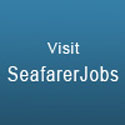| Profile of T.S.Rahaman
Sir Mohamed Yusuf Seamen Welfare Foundation had its beginnings in the year 1910. It was also the time when the indigenous and fledgling mercantile marine of the country was experiencing a shortage of trained Deck hands and Officers. This inspired Late Haji Ismail Yusuf, Proprietor of Bombay Steam Navigation Company to establish a Marine School as a Charitable Institution at Rashid Mansion, Worli Point, Bombay, as a debt of gratitude to the seafaring community who had served bravely and loyally on the Company’s ships. The purpose was also to encourage the orphans and sons of the seafaring community, irrespective of cast, creed or religion to follow in the footsteps of their forefathers.
With the demise of Haji Ismail, it fell upon his son, Sir Mohamed Yusuf to pursue the dreams of his father. He shifted the School to Nhava in 1912, the island off Bombay Harbour purchased by the Family in 1883.
Having shifted the Orphanage to Nhava in 1912, and secured permission to conduct Marine Training, in 1915 nautical education was introduced, and the School renamed as the Marine School. Subsequently a number of Institutions were added for the benefit of the local residents. The Marine Museum, Lady Khatun Marium School and Fatma Banu Hospital and Dispensary were established at Nhava Island. Sir Yusuf also handed over the large House of Haji Ismail with its ornate gardens and spacious rooms to the School. These Institutions including the Marine School were managed by a Managing Board of Sir Mohamed Yusuf Trust under its first Chairman, Mr. Abdul Rahaman, grandson of the Founder.
On 4th December, 1918 a petition was prepared by about 650 seafarers and presented to the then Governor of Bombay for the opening of a training college for Indian seafarers. Consequently, a committee was appointed to consider the proposal and submit its recommendations. Sir Yusuf declined to hand over the School to the British Government and negotiations broke down. The Petitioners thereafter approached Sir Yusuf directly to convert his school into a Marine Training Establishment, which he readily agreed to do. In 1925, the School was renamed as Marine College, and affiliated to the Bombay University. Classes were introduced for teaching Navigation and Seamanship up to the Matriculation Level to qualify for the Home Trade Certificate of Competency. With 375 students on the register, the Marine College became the first training establishment to train Indians both as Ratings and Officers for the Mercantile Marine.
Since then, the Institution has gone through various trials and tribulations with the suspension of training during the Second World War, and when after Independence the Government set up its own training establishment, and again in 1981, when the Expert Committee under Admiral (Retd.) S. L. Nanda recommended suspension of all pre sea training.
On the occasion of the Silver Jubilee of India’s Independence in 1972, the Trustees of Sir Mohamed Yusuf decided to pay homage to the memory of the Founder by Registering a Public Charitable Educational Trust under the Public Trust Act 1950, and the Societies Registration Act 1960, to be designated as Sir Mohamed Yusuf Seamen Welfare Foundation. The Governing Council comprised of representatives of various interest groups of shipping industry such as Shipping Companies, both Foreign and Indian, Seafarers’ Unions, major ports and other Patrons.
In the year 1973, the Foundation received an acquisition notice for the entire Campus from the then Government of Maharashtra. This in effect meant a sure demise of a noble and useful enterprise. Thus began a decade of defiance and uncertainty. The Institute received a new lease of life after intervention by the then Prime Minister of India, Mrs. Indira Gandhi who issued a directive in 1980 that no further acquisition be made at Nhava, and the Institution be allowed to conduct its activities. The Institution weathered this storm too.
The Decade of the 80s witnessed a new chapter in the history of the Training Ship with the introduction of the IMO Modular Courses, and thereafter, the reintroduction of Pre Sea Courses for Navigating Officer Cadets in 1988, followed by Pre Sea Rating training in 1991. With the addition of the Global Maritime Distress and Safety System Course in 1996, the Training Ship embarked on a new phase of simulator based electronic courses. The addition of RANSCO and ROC ARPA courses in the Institution has further reinforced the usefulness of simulators.
Today with the addition of Dr. Leo Barnes Pre Sea Academy, and other new facilities such as the Recreation Complex, Hostels, Staff Quarters, and a vast Playground, the Foundation can boast of a Campus second to none in the world. It is now managed by the eldest male descendent, Mr. Rashid A. Yusuf, the Great Grandson of the Founder.
Training Ship “Rahaman” has thus rendered yeoman service to the Maritime community for over nine decades and can justifiably look back to the past with a sense of pride, and to the future with anticipation and confidence
Facilities at T.S.Rahaman
A separate building on the Campus is provided as a multi purpose recreation centre. It consists of a specious auditorium with facilities for seating 800 persons or 300 diners, video projection and audio system and a stage. It is also utilised for inaugural or valedictory functions, seminars, lectures and food festivals. When not in use for the purposes mentioned above, it is utilised for indoor games, such as badminton and table tennis. It has a well equipped Gymnasium furnished with treadmills, rowing machines, exercise bicycles, and lateral pulleys and seven station multi station fitness machine.
The centre also houses the Mermaid Bar & Restaurant and a Billiard Room.
The Bullock Cart Canteen on the Campus provides healthy snacks and cold drinks while Mana Store has a well stocked convenience store.
The Campus provides outdoor sports facilities and promotes healthy development. The facilities include a swimming tank, Volley ball, and Basket ball courts. With the acquisition of the land adjoining the Campus, a full fledged sports ground for jogging, Hockey, Football, Handball and a facility for holding track and field events is now available.
Location
Nhava, Panvel Taluka,
District Raigad 401 206
Maharashtra, INDIA. |





